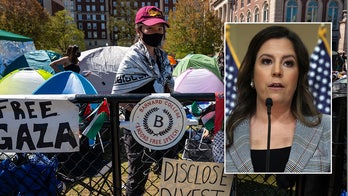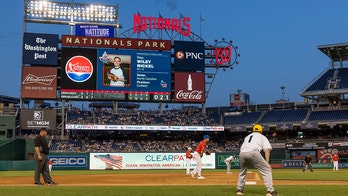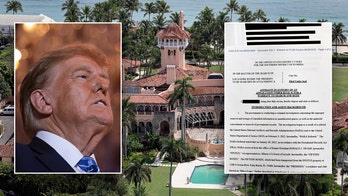WHAT IS IT? The national power grid
An increase in severe weather events, attacks on power stations and the push for green energy are all highlighting the importance of a resilient national power grid.
California's electric grid faces years of potential blackouts and failure as state leaders continue pushing aggressive measures to transition to renewable energy sources, policy experts tell Fox News Digital.
The state's grid, which is still mainly powered by fossil fuels, is undergoing a major shift from natural gas and coal power to renewable power like wind and solar. Simultaneously, state officials are pushing an electrification of the economy, particularly in the transportation sector through electric vehicle mandates, which is expected to increase pressure on the grid.
"California is drastically cutting our dependence on fossil fuels and cleaning our air," Democratic California Gov. Gavin Newsom said in a November announcement unveiling the "world’s first detailed pathway to carbon neutrality."
The state's plan involves goals to slash greenhouse gas emissions by 85%, cut oil usage by 94% and deploy more solar and wind capacity over the next two decades. The aggressive plan to overhaul the state's energy system came three months after a top California environmental agency moved forward with a rule requiring all new vehicle sales to be electric by 2035.
GAVIN NEWSOM'S 2024 CHANCES COULD BE THREATENED BY CALIFORNIA'S ENERGY GRID STRUGGLES
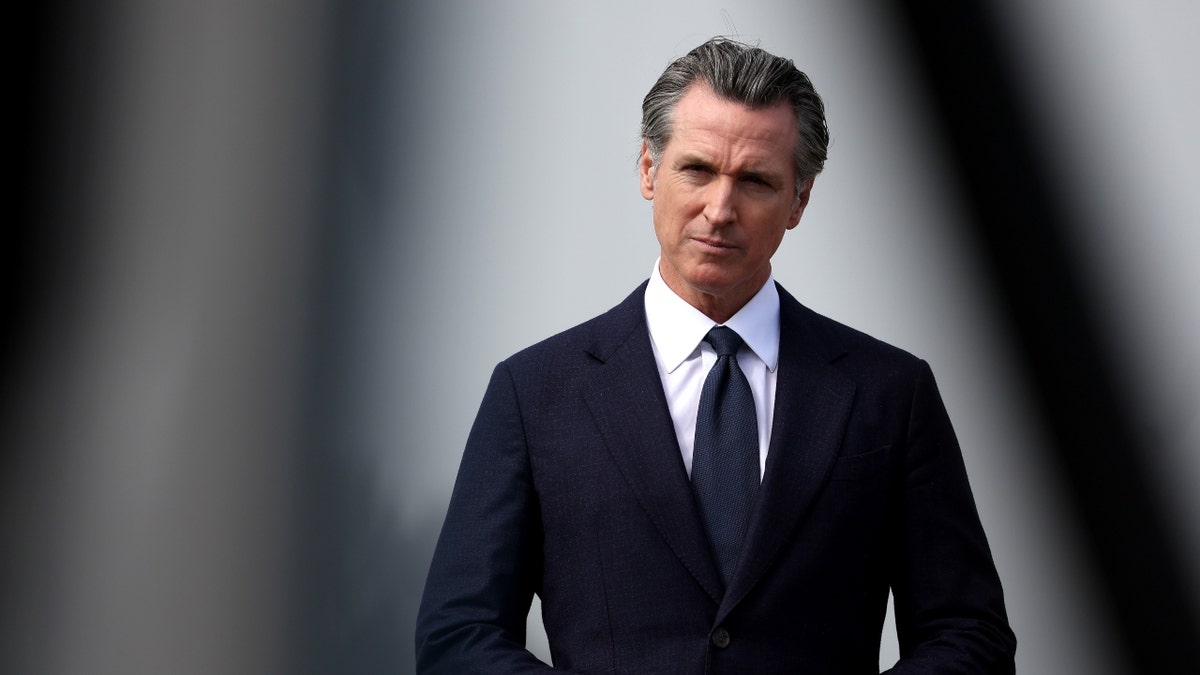
California Gov. Gavin Newsom speaks during a press conference in San Francisco. (Justin Sullivan/Getty Images)
In 2021, the most recent year with data, wind and solar accounted for about 25% of total electricity generated in California while natural gas accounted for more than 50% of in-state electricity generation. And 19% of new car sales in California were zero-emission vehicles, state data showed.
Experts told Fox News Digital environmental mandates implemented by Newsom and his administration have already created instability in the grid, an issue they argued would only get worse as existing fossil fuel power generation capacity was taken offline and replaced by intermittent sources.
"They're going to have to build an outrageous amount of wind and solar in a very short time if they want to accomplish their objectives of electrifying — our whole transportation sector and our whole home heating and cooling and residential sector," Edward Ring, a senior fellow with and co-founder of the California Policy Center, told Fox News Digital in an interview.
"There's a burden to the consumer that's going to get very heavy," he continued. "Even if they can pull it off without blackouts, the burden to the consumer is going to be ridiculous."
EXPERTS BLAME GREEN ENERGY POLICIES FOR EUROPE'S FULL-SCALE ENERGY CRISIS: 'A WARNING TO THE US'
Over summer, the California Independent System Operator (CAISO), the state's electric grid operator, repeatedly warned that high demand would significantly strain utility providers' ability to supply consumers electricity amid a heat wave.
CAISO issued an "energy emergency alert 3," its highest alert level, at one point in early September, saying residents should maximize conservation and expect rotating outages, and a flex alert for more than seven consecutive days. The operator also recommended residents refrain from charging electric vehicles to reduce stress on the grid.
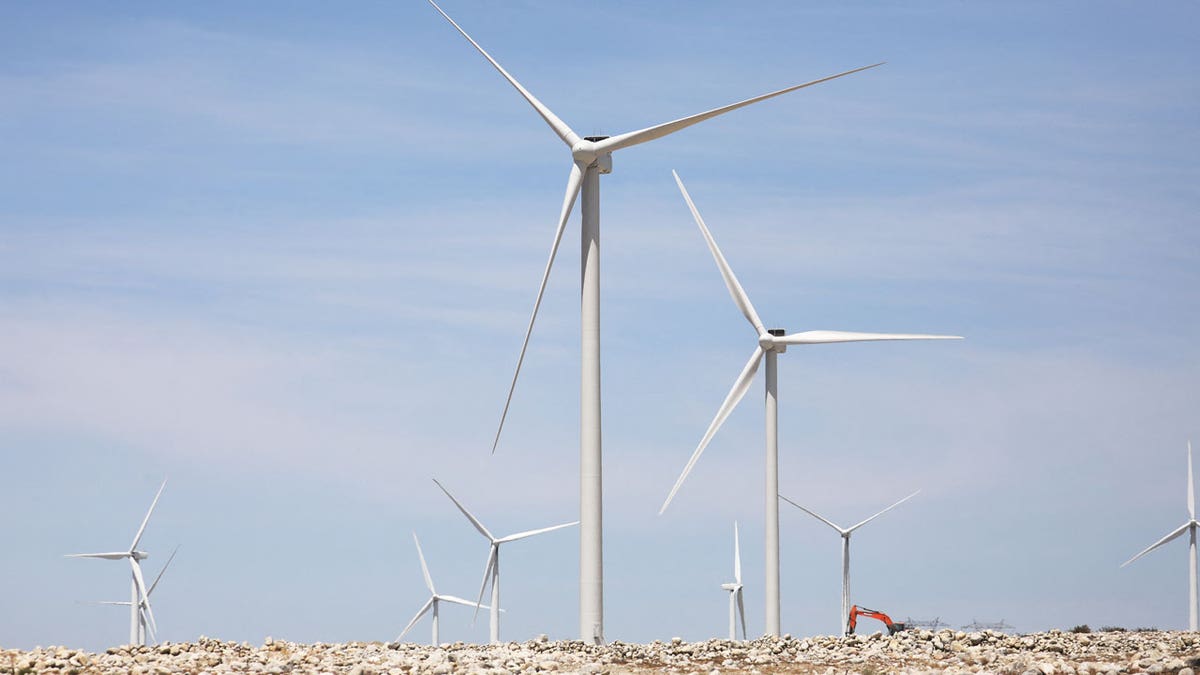
Wind turbines are photographed in Palm Springs, California. (Reuters/David Swanson)
"They already are suffering," said Myron Ebell, the director of the Competitive Enterprise Institute's Center for Energy and Environment.
"They're, in fact, telling people that they're going to start shutting off natural gas to houses and that they have to convert to electricity," he told Fox News Digital. "Then, they're forcing people to buy electric vehicles and they're going to stop selling internal combustion engine vehicles. That will add to the grid's demand."
In its annual report released in December, the North American Electric Reliability Corporation (NERC), a nonpartisan grid watchdog, stated that California faced a "high risk of energy or capacity shortfall" in coming years, particularly during summer months, as a result of traditional power plant retirements and increased demand.
CALIFORNIA URGES RESIDENTS AGAIN NOT TO CHARGE EVS ON BUSY TRAVEL WEEKEND
Ebell added that the intermittent nature of solar and wind, meaning they produce less power relative to their total generation capacity, could create instability. Green energy developers and government officials often highlight total capacity of new renewable power projects, but fail to mention how much actual power the project is expected to produce.
Solar panels, for example, produce just 25% and wind turbines produce 34% of their listed capacity, according to the Energy Information Administration (EIA). Coal, natural gas and nuclear power plants, meanwhile produce 49%, 54% and 93% of their listed capacity, respectively.

Solar panels are seen next to a Southern California Edison electricity station in Carson, California, on March 4, 2022. (REUTERS/Lucy Nicholson)
"The only way the electrification of the transportation sector and of home heating and cooling can work is if the utility sector continues to build natural gas fired plants and looks to building nuclear plants and perhaps building new coal plants because the grid in these states that are pushing these policies is already overloaded," Ebell continued.
"As everybody moves to EVs, if it happens, the only way to do it is to find more baseload power and dispatchable power."
BIDEN'S ENERGY SECRETARY SAYS SHE SUPPORTS CALIFORNIA GAS VEHICLE BAN
The total capacity of the state's natural gas power plants has fallen 15% between 2013 and 2021, according to the California Energy Commission. In April, Newsom was forced to reverse course on plans to allow California's only remaining nuclear plant, which alone produces 9% of the state's electricity generation, to close.
California also imports more electricity than any other state in the U.S., receiving between 20%-30% of its supplies from mainly fossil fuels out-of-state, EIA data shows.
Another potential hurdle to the future of California's grid stability is the need for new transmission line infrastructure to handle additional demand and connect new renewable energy projects, often located in rural regions, to the grid, Steven Malanga, a senior fellow at the Manhattan Institute, told Fox News Digital. He also argued leaders should put greater emphasis on battery storage which remains far behind where it needs to be.
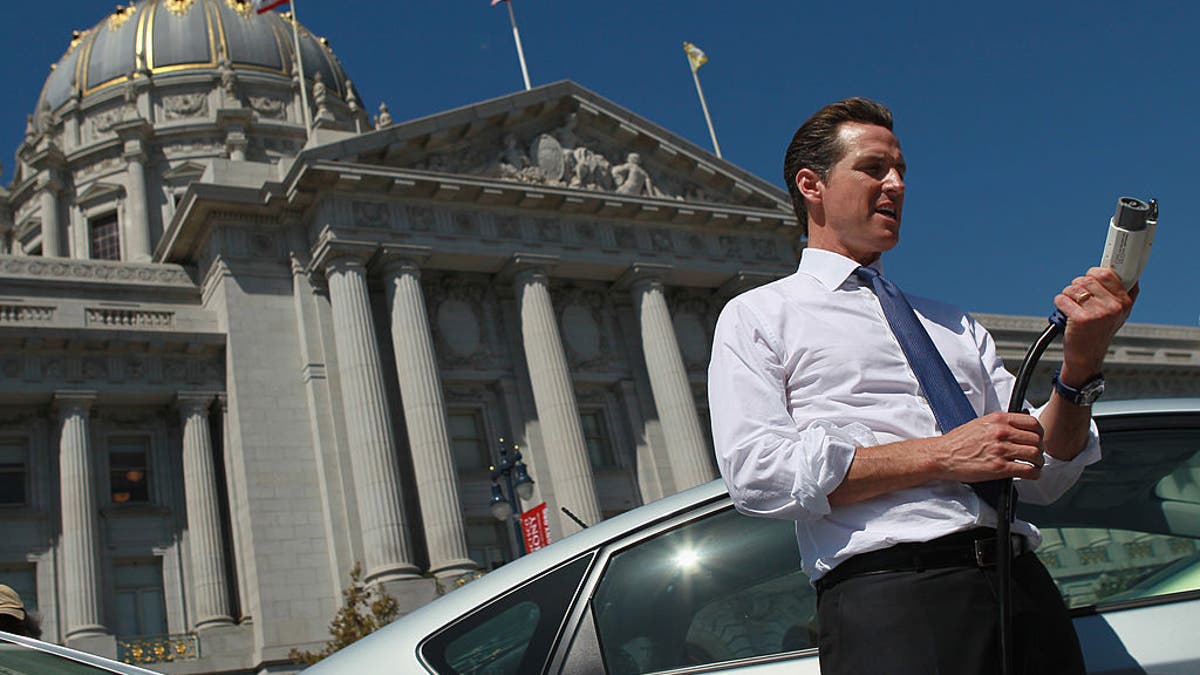
California Gov. Gavin Newsom holds a power cable before test driving a hybrid Toyota Prius when he was mayor of San Francisco. (Justin Sullivan/Getty Images)
"These are tremendous costs which haven't been fairly calculated by the renewable energy people," Malanga said in an interview. "Essentially what happens is we have this power grid that has been built up over the decades and to go renewable doesn't just involve building renewable like wind farms and solar farms, but you also have to build new transmission lines."
"And more significantly, you have to build storage capacity," he continued. "In a lot of places like California, they're not even backing up renewables with natural gas, which is really what most sensible people, utility people, say you have to do because renewables are intermittent."
VIRGINIA DEMOCRATS FORCE STATE TO ADOPT CALIFORNIA'S CRACKDOWN ON GAS CARS
The Department of Energy estimated last year that the U.S. would need to expand its transmission infrastructure 60% by 2030 and triple its size by 2050 to meet climate goals.
According to an independent analysis by energy researcher Robert Bryce, at its current pace, it would take an estimated 282 years to triple the nation's transmission capacity. Like other energy projects and infrastructure development, transmission lines often face delays from environmental regulation and local opposition.

Heavy electrical transmission lines are pictured at the Ivanpah Solar Electric Generating System in California's Mojave Desert on July 15, 2022, near Primm, Nevada. (George Rose/Getty Images)
"You have to get that power to cities which are the big users of electricity," Malanga told Fox News Digital. "So, you have to build all new transmission lines. Transmission lines are not only expensive to build, but they face tremendous environmental regulations. Permitting them takes years."
CLICK HERE TO GET THE FOX NEWS APP
"It takes ten years just to get approvals to build some of these transmission lines and that's just one generation," he added. "Some of these places have renewable targets that are 2035, 2040 and 2045. That's not that's far in the future if you're talking about building a whole new energy infrastructure, which is essentially what we're talking about in California."
"The truth of the matter is that in many places we've seen how the energy grid is already dangerously close to failing because we're not paying enough attention to sustaining the grid. This is going to result in blackouts. And we've already seen them. The stories are tragic."



